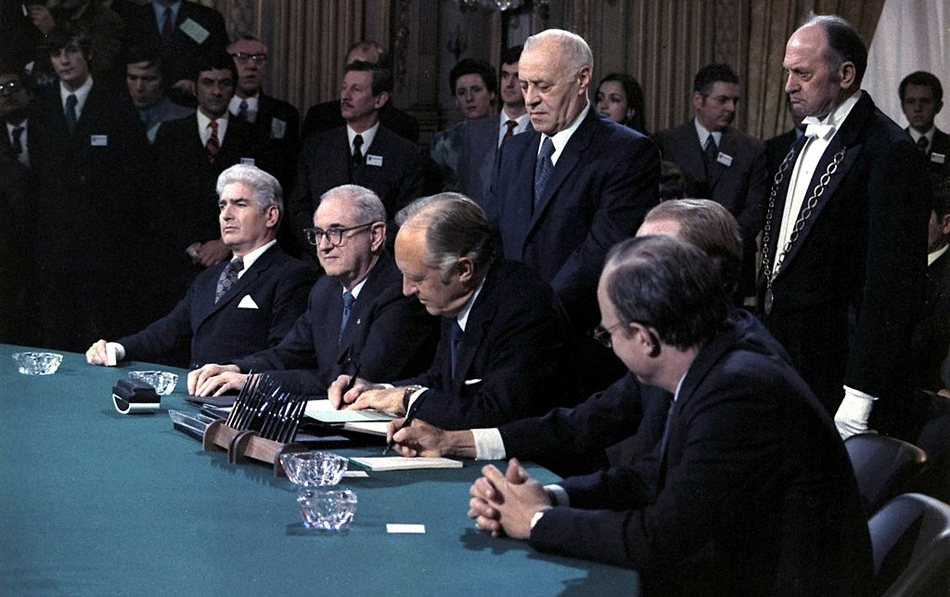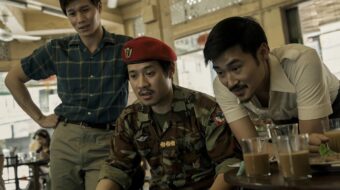
Forty-five years ago, on Jan. 27, 1973, the Paris Peace Accords effectively removed the United States from the conflict in Vietnam. A truce went into effect the following day.
Even though the agreement’s provisions would be routinely flouted by both the North (NVN) and the South (SVN) Vietnamese, American public support for protracting the war any further was exhausted. Over the next two years, the corrupt government of South Vietnamese President Nguyen Van Thieu steadily lost favor, and the communist/nationalists both from the North and from within SVN enlarged the area under their control.
After a final offensive in early 1975, the SVN capital of Saigon fell to the NVN army supported by National Liberation Front (NLF—Viet Cong) units on April 30, 1975. The last remaining U.S. diplomatic personnel evacuated by helicopter, the war was finally over, and Vietnam became one unified country.
American deaths in the war mounted to some 58,000. The last U.S. serviceman to die in combat in Vietnam, Lt. Col. William B. Nolde, was killed by an artillery shell at An Loc, 60 miles northwest of Saigon, 11 hours before the truce went into effect. Later that year, President Nixon abolished the draft and instituted an all-volunteer army. That act largely eviscerated the anti-war movement, which involved millions of draft-age men.
As of January 1973, the balance of military forces was as such: SVN combined ground combat regulars, regional and Popular Force militias and service troops, 920,000; and for the combined communist/nationalist opposition, NVN ground troops in SVN, NLF, and service troops, 219,000.
By August 15, 1973, 95 percent of American troops and their allies had left Vietnam, as well as Cambodia and Laos under the Case-Church Amendment. The amendment, which was approved by the U.S. Congress in June 1973, prohibited further U.S. military activity in those three countries unless the president secured Congressional approval in advance.
During this time, Nixon was being driven from office due to the Watergate scandal, which led to his resignation in 1974. Even as the belt tightened around the SVN regime in 1974 and 1975, Congress refused to appropriate additional military assistance, citing strong opposition to the war by Americans and the loss of American equipment to the North by retreating Southern forces. Thieu subsequently resigned, accusing the U.S. of betrayal, a theme that echoes throughout the right-wing in the U.S. still: That the war could have been won were it not for American weakness and indecisiveness.
In the wake of the Vietnamese people’s success, communists were also victorious in Cambodia when the Khmer Rouge captured Phnom Penh on April 17, and when the Pathet Lao in Laos captured Vientiane on December 2.
The settlement included a cease-fire throughout Vietnam. The U.S. agreed to the withdrawal of all U.S. troops and advisors (totaling about 23,700 by then) and the dismantling of all U.S. bases within 60 days. In return, the North Vietnamese agreed to release all U.S. and other prisoners of war.
Both sides agreed to the withdrawal of all foreign troops from Laos and Cambodia and the prohibition of bases in and troop movements through these countries. It was agreed that the DMZ at the 17th Parallel would remain a provisional dividing line, with eventual reunification of the country “through peaceful means.” An international control commission would be established made up of Canadians, Hungarians, Poles, and Indonesians, with 1160 inspectors to supervise the agreement.
The main negotiators of the agreement were U.S. National Security Advisor Henry Kissinger and Vietnamese Politburo member Le Duc Tho, who were awarded the 1973 Nobel Peace Prize for their efforts, although Le Duc Tho refused to accept it.
The document began with the statement that “the United States and all other countries respect the independence, sovereignty, unity, and territorial integrity of Vietnam as recognized by the 1954 Geneva Agreements on Vietnam.” The inclusion of this provision was a victory for the communist side of the negotiations by allowing that the war was not a foreign aggression against SVN, which had been held up to the American people as an attack on an ally and thereby justification for the war.
Quiet negotiations to end the war had already begun during LBJ’s presidency. In part they were thwarted when presidential candidate Richard Nixon in 1968 publicly promised during his campaign that he had a plan. After winning the November election, Nixon did not reveal or fulfill his plan and the war dragged on.
On May 8, 1972, by now contemplating his re-election in November, President Nixon made a major concession to NVN by announcing that the U.S. would accept a cease-fire in place as a precondition for its military withdrawal. In other words, the U.S. would withdraw its forces from SVN without NVN doing the same. This concession broke a deadlock and resulted in progress in the talks over the next few months.
The final major breakthrough came on October 8, 1972. Prior to this, NVN had resisted the legitimacy of the puppet government in Saigon. It was also concerned about political and military isolation if Nixon’s efforts at Cold War détente significantly improved U.S. relations with the Soviet Union and the People’s Republic of China, who were backing the NVN-NLF effort. In a meeting with Kissinger, Tho significantly modified his bargaining line, allowing that the Saigon government could remain in power and be a party to a final settlement. Within 10 days the secret talks drew up a final draft. Kissinger held a press conference in Washington during which he announced that “peace is at hand”—just in time for Election Day 1972.
On January 15, 1973, just before his second-term inauguration, President Nixon announced a suspension of offensive actions against NVN. Kissinger and Tho met again on January 23 and signed off on a treaty that was basically identical to the draft of three months earlier. The agreement was signed by the leaders of the official delegations on January 27, 1973, at the Hotel Majestic in Paris.
It was at these negotiations that the debate arose concerning the shape of the table to be used at the conference. The North favored a circular table, in which all parties, including NLF representatives, would appear to be equal in importance. The South Vietnamese argued that only a rectangular table was acceptable, for only a rectangle could show two distinct sides to the conflict. Eventually a compromise was reached, in which representatives of the northern and southern governments would sit at a circular table, with members representing all other parties sitting at individual square tables around them. The “shape of the table” has survived as a metaphor for silly distractions and delaying tactics, but at the time there was meaningful symbolism around the issue.
From combined sources.












Comments